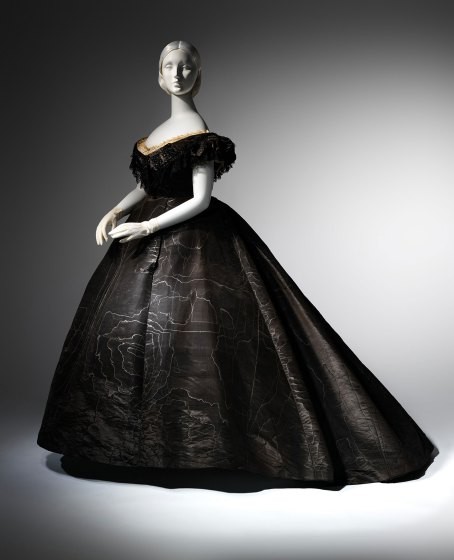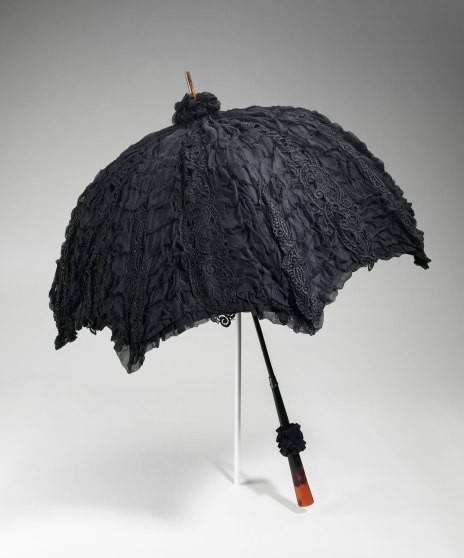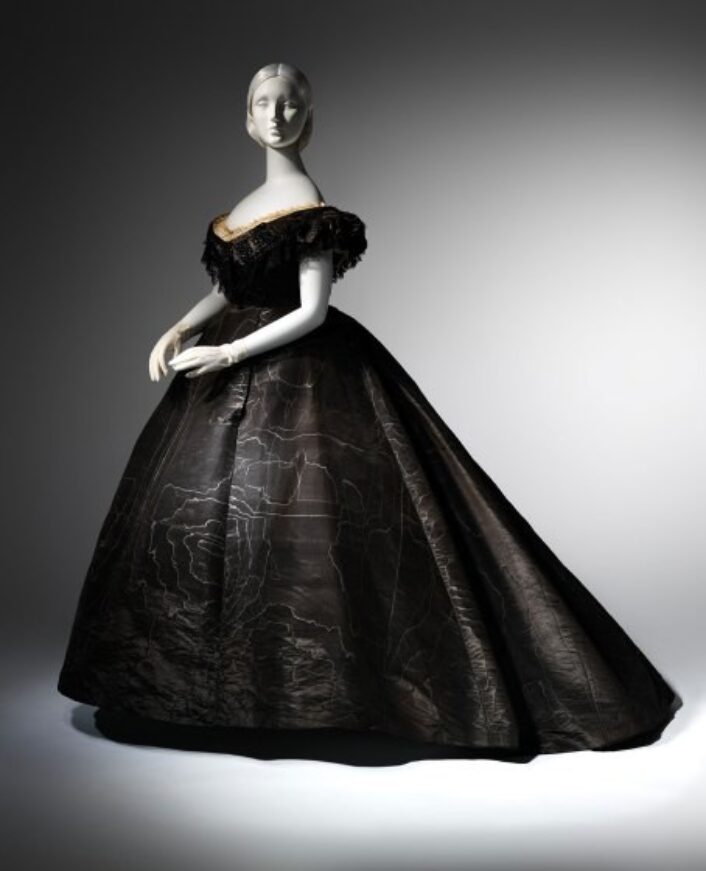Now through the end of the month, you have a chance to explore a century worth of mourning attire. The color remains the same, but the silhouettes throughout different periods of time change dramatically. Almost as important, this is the first fall exhibition at The Costume Institute space since it reopened in May as the Anna Wintour Costume Center. The time frame, 1815-1915, was one in which there were “rules” and widows had to don black for two entire years. There was the widow that wore black to reflect her utter sadness and there was the widow who, conveniently, used her attire to signal un-attachment, experience and perhaps, newfound fortune. Whatever the case, “Death Becomes Her: A Century of Mourning Attire” is worth checking out if you happen to find yourself in NYC this month.

Evening dress from 1861; made of black moire silk, black jet and black lace.
Photo courtesy of: Time Magazine by photographer Karin L. Willis

Mourning Ensemble, 1870-1872; Veil from 1875. Black silk crape and black mousseline.
Photo courtesy of: Time Magazine by photographer Karin L. Willis

Mourning Parasol, 1895-1900, made from black silk, wood, metal and tortoise-shell
Photo courtesy of: Time Magazine
